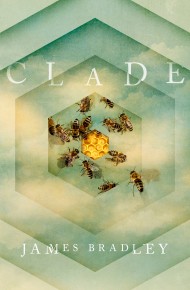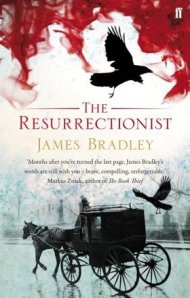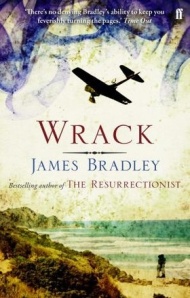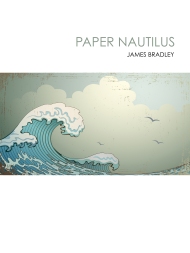“We have pierced the veneer of outside things”: Four Books About Antarctica
Ambassador to the Penguins
Eleanor Mathews
End of the Earth
Peter Matthiessen
Polar Castaways: The Ross Sea Party (1914-17) of Sir Ernest Shackleton
Richard McElrea & David Harrowfield
Frank Hurley: A Photographer’s Life
Alasdair McGregor
Examining his reasons for returning to Antarctica, Peter Matthiessen finds himself uncomfortably aware of both the inadequacies and evasions of his answer: “I might mutter uncomfortably that Antarctica is monumental, an astonishment. Perhaps (if pressed) I might declare that its excruciating purity and vast healing silence ring with creation, ancient and yet new and fresh beyond imagining. More than any region left on Earth . . . Antarctica is immaculate, inviolable . . . [its] frigid seas abound in marine creatures in a diversity still marvellously intact. . . . Yet there is something else.”
This sense of the something else pervades our responses to the Antarctic. Its emptiness and stark beauty seem to speak to some need within us, some desire for the divine. Nature documentaries present us with images of sculpted ice and the alien landscapes beneath the water, imbuing them with haunting beauty, transforming the prosaic into the sublime. So too our written narratives: “We have pierced the veneer of outside things,” wrote Shackleton, “seen God in his splendour . . . reached the naked soul of Man,” sentiments which have been echoed time and again.
There seems little doubt that this idea – one which meshes rather too neatly with the notion of Antarctica as the last great capital “W” Wilderness – lies behind the recent boom in Antarctic-related publishing. This subtext is explicit in Eleanor Mathews’ account of the year her grandfather, American naturalist Robert Cushman Murphy spent on an American whaler over the summer of 1912-13, which contrasts Murphy’s own accounts of the beauty and abundance of the place with the brutality and carelessness of its exploitation. In Australia we have seen volumes of Antarctic photographer Frank Hurley’s pioneering photographs of Mawson and Shackleton’s expeditions, reissues of Shackleton’s classic account of his adventures, South, Adrian Caesar’s fascinating and subversive investigation of Scott and Mawson’s expeditions, The White, to name just a few.
As portraits of human life in extremis they are incomparable, accounts of almost unbelievable endurance and privation, impossible journeys, cruel ironies and steely resolution. And while the outlines of them (and the meanings read into them) are for the most part well-known – the superhuman Shackleton, the patriot and hero, Mawson, tragic Scott and his companions – there are still stories which remain to be told, as Polar Castaways, McElrea and Harrowfield’s meticulous account of the privations endured by the ten men left stranded in Shackleton’s support camp eloquently demonstrates.
For the most part these portraits are sympathetic, with the notable exception of Roland Huntford’s account of Scott’s expedition, The Last Place on Earth, a book even Matthiessen, who regards Scott with a degree of scepticism, describes as “entirely damning”, and closer to home, Adrian Caesar’s The White, which offers an intriguing revisionist account of its subject.
And yet these accounts, focussing as they do upon the unquestionable courage and fortitude of their subjects, tend to obscure as much as they make plain. It is all too easy to be seduced by Shackleton’s visionary prose and forget the recklessness of what he did, lose sight of the man behind the legend, a shameless and inveterate chancer whose irresistible personality repelled as many as it drew after it.
The same is true of our understanding of Scott, whose tragic myth (itself erasing that of the elusive and neglected Amundsen) obscures the sheer ineptitude of his actual expedition. And even Hurley, whose carefully staged and doctored photographs might themselves be a metaphor for their working-class author’s own shameless process of self-invention and self-mythologisation (a reading Alisdair McGregor, no doubt bound by Hurley’s estate, suggests but never quite makes explicit) is a more elusive and ambiguous figure than his increasingly iconic place in our culture suggests.
And yet their power as narratives endures. In part this is a function of the literature they produced. The voyages of the Endurance and Aurora’s crews are amongst the best documented there have ever been. Both Shackleton and Mawson’s expeditions were self-consciously literary in their conception, their leaders fully aware of the power of the written word (as patriotic science in Mawson’s case, as promotional and money-making vehicle in Shackleton’s).
But the leaders were not alone: confined to their huts and cabins, often snowed in for weeks or months at a time the expeditions’ members were tireless recorders of their own experiences, bequeathing historians and biographers a vast body of letters and journals, many of them works of great beauty and power.
Perhaps though the reason for their power lies not so much in them but in us. Could it be their conception of the Antarctic as a crucible, a place where it is possible to transcend the human and gain a glimpse of the infinite gives shape to feelings our culture usually struggles to express? Once we had names for this feeling, calling it knowledge of God, of the divine. Now, like Matthiessen, we find ourselves groping after it with words we know to be inadequate, aware only of the limits of our language, of our own limitations. And of the something else.
First published in The Bulletin, 6 April 2005.









